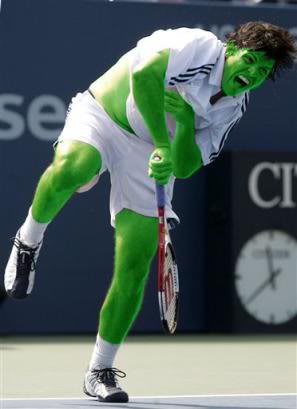Calling foot faults is tough at the amateur level. First of all, it’s difficult to see completely clearly that an opponent is certainly foot-faulting. In doubles, it’s slightly easier to watch for, but still difficult to call.
 In USTA league tennis, it is certainly against the rules to foot fault. However, it is an area of the game that players tend to give each other some leeway, if they even pay any attention to it at all.
In USTA league tennis, it is certainly against the rules to foot fault. However, it is an area of the game that players tend to give each other some leeway, if they even pay any attention to it at all.
The time to call it is when it’s blatantly obvious and repetitive. Typically, this is rare in singles play. The vantage point is just not there to be sure. In doubles though, if a player is consistently stepping way over the line when serving, and it’s flagrantly obvious, here’s what I recommend:
Generally, the player’s own partner is the best one to deliver the news to the server. Just make a quick, polite comment like “Your partner is stepping on the line when serving, I haven’t called it yet but you should probably mention it”. If this is too wishy washy for you (or you’re playing singles), move on to #2.
After the server finishes the game (or point for extremely obvious foot faulting), let the server know they are foot faulting. Usually, this is enough to make them aware of the problem and fix it.
If they still foot faul, it’s time to increase the pressure a tad. Warn them that you will have to call them on a foot fault the next time you see it happen. They aren’t going to like this but hey, rules are rules and you’ve given them more than enough polite warnings. If they STILL foot fault, move on to #4.
Each time you see it, call it. At this point you’ve done all you can and have been more than fair. If they complain, you can say you’ve warned them. If this is an official USTA event/match, you can request a line judge to come watch for the foot faults as well.
Read #24 of the USTA’s “THE CODE: The Players’ Guide for Unofficiated Matches” for more information on foot faulting in USTA League play.